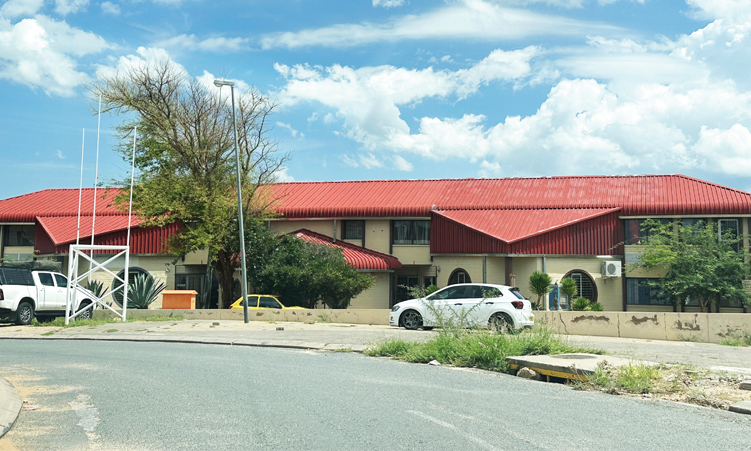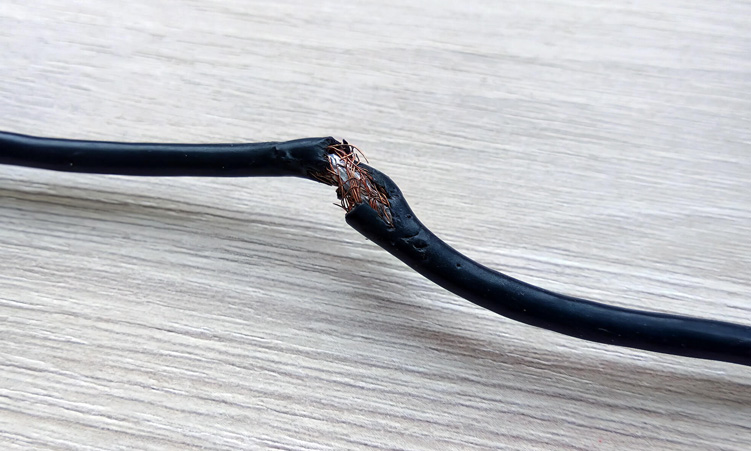IN death, as in life, one of the duped customers of crooked car dealer Ockie Pretorius is refusing to give up his court battle against Standard Bank Namibia over the bank’s business relationship with the fugitive fraudster.
When Tim Eysselinck, an American-born resident of Windhoek, died in the capital on April 23, it was almost a week short of seven months after he had lost a hard-fought High Court case against Standard Bank Namibia for the ownership of a vehicle that he had bought from Pretorius. By the time of his death, he had already instructed his lawyers to continue with his long legal battle against the bank in the Supreme Court.So, on Monday, Eysselinck’s widow, Birgitt Eysselinck, continued with her husband’s quest in Namibia’s highest court.For many the Toyota Hilux double cab bakkie at the centre of the case between Eysselinck and the bank would be just an object – even if a quite valuable one – with little meaning beyond its purpose as a means of transport.But not so for the two parties involved in Eysselinck vs Standard Bank Namibia, Stannic Division.For them, there are principles much greater than just the car involved.For the bank, their counsel, Dave Smuts, indicated to the Supreme Court, it is a matter of the protection of ownership rights that the law guarantees in Namibia.For Tim Eysselinck, indicated the couple’s counsel, Raymond Heathcote, it was a matter of principle that a financial institution that, in his late client’s view, cuddles crooks cannot later, once its relationship with a dubious client turns sour, try to limit its losses at the expense of an innocent third party.Tim Eysselinck bought the bakkie from Pretorius in October 2000.The price was to be N$160 000, and in January 2001 Eysselinck had paid that full amount to Pretorius.The vehicle had also been duly registered in Eysselinck’s name.He would later claim that – despite the fact that media reports had started surfacing by late November 2000, raising serious question marks over Pretorius’s honesty and his track record as a used car dealer – he was satisfied that he was safe as far as his transaction with Pretorius was concerned.But by early March 2001, shortly after Pretorius had left Namibia overnight, leaving behind not only a string of incensed and allegedly cheated former customers but also large debts to Standard Bank, the bank repossessed the vehicle that Eysselinck had thought was his.The bank had financed Pretorius’s initial buying of the bakkie in November 1999, with one of the conditions of the financing agreement having been that the vehicle would remain the bank’s property until Pretorius had paid it in full.He never paid it off though.Instead, he sold it to the unsuspecting Eysselinck who, after the bank’s intervention, was at risk of being out of pocket to the tune of N$160 000, with nothing to show for it.During the hearing before Acting Chief Justice Johan Strydom, Judge of Appeal Pio Teek and Acting Judge of Appeal Bryan O’Linn in the Supreme Court on Monday, Heathcote continued along the same line of attack as he had pursued in the High Court, where Acting Judge Theo Frank had ruled in the bank’s favour in September last year.Heathcote devoted much of his attention to the way Pretorius had managed to secure a large overdraft facility with the bank for one of his businesses, by telling the bank that he was expecting a payment of N$1,5 million from Rössing Uranium for work that his company had done for the mining company.Only after some 22 months, when Pretorius did not meet payments to the bank as demanded, did the bank contact Rössing to check up on the claimed transaction.The bank then discovered that the deal about which Pretorius had made the promise to the bank, had in fact amounted to a transaction of only some N$1 500.By then, Pretorius had been using the very same bank account on which the bank had given him overdraft facilities to pay the same bank for the Toyota bakkie, Heathcote argued.Also, by then the bank had been warned, in April 2000, by a Standard Bank official in South Africa that Pretorius had been involved in fraudulent car deals in that country, and that the bank should not do business with him in Namibia.The upshot of this chain of events and omissions, Heathcote told the court, was that the bank should have, and could have, acted much earlier to protect itself with regard to the bakkie that Pretorius had bought.By not acting in time, the bank had allowed Pretorius to draw an innocent third party – Eysselinck – into the affair, and thus the bank could not be allowed to cut its losses at Eysselinck’s expense, he argued.But according to Smuts the key question was what representation the bank had made to lead Eysselinck to believe that Pretorius had the legal right to sell the vehicle.Like any reasonable person, Eysselinck should have required not only proof of ownership but also proof of payment for the vehicle from Pretorius before he concluded his deal with the car dealer, Smuts stated.He argued that the fact of the matter was that it had not been any representation by the bank that had caused Eysselinck to act to his own detriment.Time and again Smuts came up against the same query from Acting Judge of Appeal O’Linn, though.That question was whether the bank should not have done an elementary check on Pretorius’s N$1,5 million deal promise right at the start, or at least after the April 2000 warning about Pretorius’s past record.Such a check could have prevented Pretorius from selling the vehicle to an innocent third party six months later, only for the bank as “the secret owner” to then intervene and claim the vehicle back.”Is that a conscionable attitude?” Judge O’Linn asked.Having reserved its judgement on the case, the Supreme Court may now answer that question in its own time.By the time of his death, he had already instructed his lawyers to continue with his long legal battle against the bank in the Supreme Court.So, on Monday, Eysselinck’s widow, Birgitt Eysselinck, continued with her husband’s quest in Namibia’s highest court.For many the Toyota Hilux double cab bakkie at the centre of the case between Eysselinck and the bank would be just an object – even if a quite valuable one – with little meaning beyond its purpose as a means of transport.But not so for the two parties involved in Eysselinck vs Standard Bank Namibia, Stannic Division.For them, there are principles much greater than just the car involved.For the bank, their counsel, Dave Smuts, indicated to the Supreme Court, it is a matter of the protection of ownership rights that the law guarantees in Namibia.For Tim Eysselinck, indicated the couple’s counsel, Raymond Heathcote, it was a matter of principle that a financial institution that, in his late client’s view, cuddles crooks cannot later, once its relationship with a dubious client turns sour, try to limit its losses at the expense of an innocent third party.Tim Eysselinck bought the bakkie from Pretorius in October 2000.The price was to be N$160 000, and in January 2001 Eysselinck had paid that full amount to Pretorius.The vehicle had also been duly registered in Eysselinck’s name.He would later claim that – despite the fact that media reports had started surfacing by late November 2000, raising serious question marks over Pretorius’s honesty and his track record as a used car dealer – he was satisfied that he was safe as far as his transaction with Pretorius was concerned.But by early March 2001, shortly after Pretorius had left Namibia overnight, leaving behind not only a string of incensed and allegedly cheated former customers but also large debts to Standard Bank, the bank repossessed the vehicle that Eysselinck had thought was his.The bank had financed Pretorius’s initial buying of the bakkie in November 1999, with one of the conditions of the financing agreement having been that the vehicle would remain the bank’s property until Pretorius had paid it in full.He never paid it off though.Instead, he sold it to the unsuspecting Eysselinck who, after the bank’s intervention, was at risk of being out of pocket to the tune of N$160 000, with nothing to show for it.During the hearing before Acting Chief Justice Johan Strydom, Judge of Appeal Pio Teek and Acting Judge of Appeal Bryan O’Linn in the Supreme Court on Monday, Heathcote continued along the same line of attack as he had pursued in the High Court, where Acting Judge Theo Frank had ruled in the bank’s favour in September last year.Heathcote devoted much of his attention to the way Pretorius had managed to secure a large overdraft facility with the bank for one of his businesses, by telling the bank that he was expecting a payment of N$1,5 million from Rössing Uranium for work that his company had done for the mining company.Only after some 22 months, when Pretorius did not meet payments to the bank as demanded, did the bank contact Rössing to check up on the claimed transaction.The bank then discovered that the deal about which Pretorius had made the promise to the bank, had in fact amounted to a transaction of only some N$1 500.By then, Pretorius had been using the very same bank account on which the bank had given him overdraft facilities to pay the same bank for the Toyota bakkie, Heathcote argued.Also, by then the bank had been warned, in April 2000, by a Standard Bank official in South Africa that Pretorius had been involved in fraudulent car deals in that country, and that the bank should not do business with him in Namibia.The upshot of this chain of events and omissions, Heathcote told the court, was that the bank should have, and could have, acted much earlier to protect itself with regard to the bakkie that Pretorius had bought.By not acting in time, the bank had allowed Pretorius to draw an innocent third party – Eysselinck – into the affair, and thus the bank could not be allowed to cut its losses at Eysselinck’s expense, he argued.But according to Smuts the key question was what representation the bank had made to lead Eysselinck to believe that Pretorius had the legal right to sell the vehicle.Like any reasonable person, Eysselinck should have required not only proof of ownership but also proof of payment for the vehicle from Pretorius before he concluded his deal with the car dealer, Smuts stated.He argued that the fact of the matter was that it had not been any representation by the bank that had caused Eysselinck to act to his own detriment.Time and again Smuts came up against the same query from Acting Judge of Appeal O’Linn, though.That question was whether the bank should not have done an elementary check on Pretorius’s N$1,5 million deal promise right at the start, or at least after the April 2000 warning about Pretorius’s past record.Such a check could have prevented Pretorius from selling the vehicle to an innocent third party six months later, only for the bank as “the secret owner” to then intervene and claim the vehicle back.”Is that a conscionable attitude?” Judge O’Linn asked.Having reserved its judgement on the case, the Supreme Court may now answer that question in its own time.
Stay informed with The Namibian – your source for credible journalism. Get in-depth reporting and opinions for
only N$85 a month. Invest in journalism, invest in democracy –
Subscribe Now!










